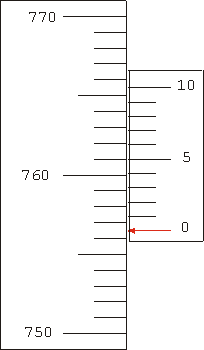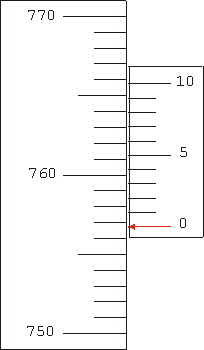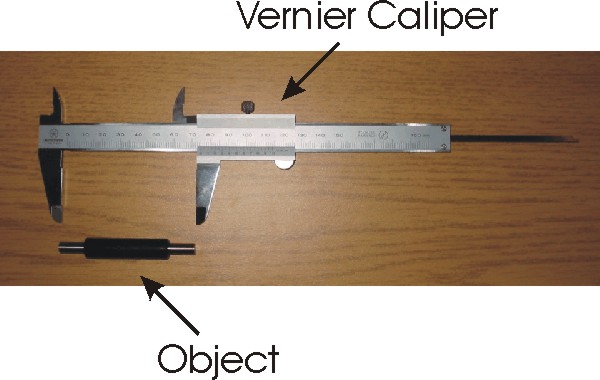A Vernier allows a precise reading of some value. In the figure to the right, the Vernier moves up and down to measure a position on the Scale. This could be part of a barometer which reads atmospheric pressure.
The "pointer" is the line on the vernier labelled "0". Thus the measured position is almost exactly 756 in whatever units the scale is calibrated in.
If you look closely you will see that the distance between the divisions on the vernier are not the same as the divisions on the scale. The 0 line on the vernier lines up at 756 on the scale, but the 10 line on the vernier lines up at 765 on the scale. Thus the distance between the divisions on the vernier are 90% of the distance between the divisions on the scale.

If we do another reading with the vernier at a different position, the pointer, the line marked 0, may not line up exactly with one of the lines on the scale. Here the "pointer" lines up at approximately 756.5 on the scale.
If you look you will see that only one line on the vernier lines up exactly with one of the lines on the scale, the 5 line. This means that our first guess was correct: the reading is 756.5.

Here is a final example, with the vernier at yet another position. The pointer points to a value that is obviously greater than 756.5 and also less than 757.0. Looking for divisions on the vernier that match a division on the scale, the 7 line matches fairly closely. So the reading is about 756.7.
In fact, the 7 line on the vernier appears to be a little bit above the corresponding line on the scale. The 8 line on the vernier is clearly somewhat below the corresponding line of the scale. So with sharp eyes one might report this reading as 756.73 ± 0.02.
This "reading error" of ± 0.02 is probably the correct error of precision to specify for all measurements done with this apparatus.

